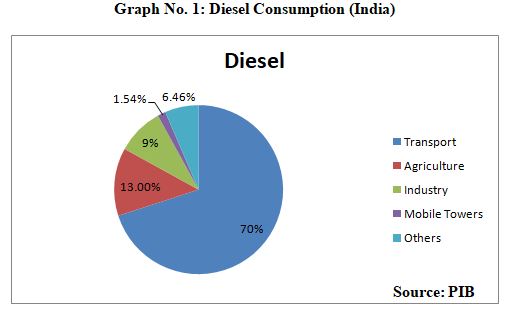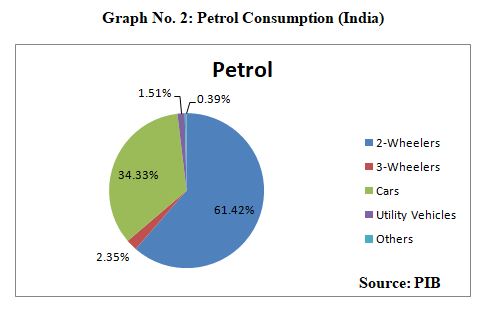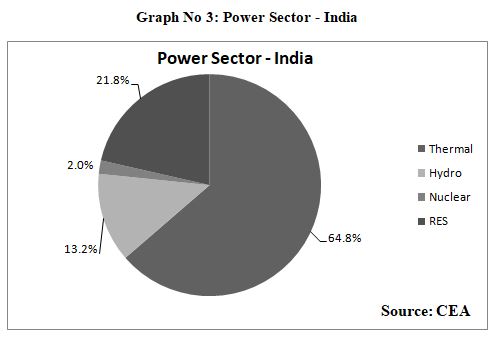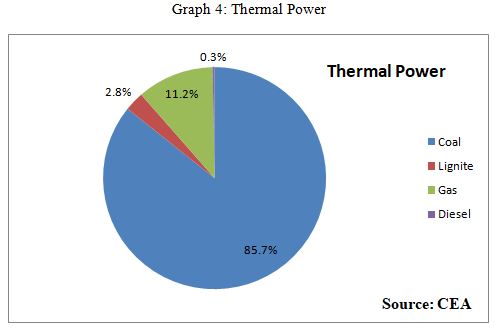|
Rajeev Kumar Upadhyay Assistant Professor Department of Commerce Sri Aurobindo College (Evening) University of Delhi, New Delhi |
There is almost a broad consensus that electric vehicles coupled with renewable energy are greener and sustainable mode of transportation for India. However India needs to tread carefully. There is need to put infrastructures like battery charging stations and batteries management facilities in place to make electric vehicles viable option in India. But prior to this, adequate policy response is needed from the government to update its laws which could accommodate Li-ion and other types of batteries into its ambit. Moreover Indian Government has allocated budget for promotion of electric vehicles but that wouldn’t be enough. To speed up this process, there is a need for the participation from the corporate sector. Corporate sector can participate either by investing in the business to earn profits or in form of corporate social responsibility to help build a sustainable world. Also India needs to be careful that the push to electric vehicles wouldn’t result into increase in child labour and violation of human rights.
Keywords:Transportation, Electric Vehicles, Environment
JEL Classification: R42, Q2, Q5
The catastrophic changes in the environment have completely changed the weather pattern across world leading seasonal disruptions. These seasonal disruptions are negatively impacting the whole world. This has brought the whole world together to pledge for the better environment through different initiatives to contain the degradation and deterioration of the environment and nature. For this purpose, a number of treaties such as United Nations Framework Convention on Climate Change, Vienna Convention for the Protection of the Ozone Layer, Montreal Protocol, Stockholm Convention and Nagoya Protocol etc. have been ratified and implemented by member nations. To this end every nation has been taking different measures to contain environmental degradation without hampering economic growth and development so that a sustainable economic growth and development model can be devised over time. The budget for fiscal year 2019-20 has presented electric vehicles as the future mode of transportation for India keeping in mind about her pledge towards environment under different treaties. The dangerous level of emissions from traditional fossil fuel (petroleum and natural gas) based vehicles and the challenges that environment is facing today has made the world to rethink every policy. This has resulted into commitment to cut carbon footprint(UN, 2019). Under her National Wind-Solar Hybrid Policy 2018, India has planned to maximize the share and optimally use the renewable energy resources as well as make it into the habits of Indian citizens (MNRE, 2018). To achieve the state policy goals, the government has made provision for subsidy in the budget to promote electric vehicles in India. Though it’s a small step towards greener environment but is of huge significance for both the economy as well as for the environment along with the transportation habits of India.
From Graph No. 1 it is clear that transportation sector is the largest consumer of diesel with 70% of total consumption. The second largest consumer of diesel is agriculture sector followed by industry. As far as petrol consumption in India is concerned, from Graph No. 2, it is clear that more than 61% of total consumption belongs to 2-wheelers. 34.5% of total petrol is consumed by cars. Only around 4.5% of the total petrol consumption can be attributed to other activities including industry. Most of these 2-wheelers and cars belong to household. So the emissions from these vehicles can be attributed to household, not industry.

From the consumption patterns of diesel and petrol in the country, it is clear the transportation sector alone consumed 70% of total diesel and 99% of total petrol in the country (PIB, 2014). The carbon dioxide emissions from fuel combustion are only around 11% of the total carbon dioxide emissions in the country (FoR, 2017) and a major part of it belong to transportation sector. The remaining 89% of the total carbon dioxide emissions are from other activities including industry, agriculture, household and other allied activities. At maximum, not more than 11% of the total carbon dioxide emissions can be attributed to transportation sector. Also it is clear that transportation sector is the single largest emitter of carbon dioxide from combustion of fuels excluding coal. Apart from carbon dioxide, fossil oil combustion process also emits many hazardous pollutants such as carbon monoxide, sulphur dioxide, nitrogen oxides,benzene and different types of hydrocarbons along with soot.So considering the volume of diesel and petrol consumption in the country, transportation sector contributes significantly to pollution. Apart from these, the numbers of private vehicles are increasing at very high rate in India which would increase the level of pollution. This situation requires adequate policy response to contain pollution and government’s intervention in form of promotion of electric vehicle seems to be the need of hour.

Considering the environmental impact of these emissions, government is convinced that electric vehicles can provide solution. So under its FAME scheme, it is promoting electric vehicles in India which is part of its flagship program the National Electric Mobility Mission Plan 2020. For this purpose government has not only allocated Rs. 10,000 crores to create ecosystem and incentivise the use of electric vehicles in India (MHIE, 2019) but also has reduced GST rate from 12% to 5% on electric vehicles (MoF, 2019).
On electricity front, the whole scenario is quite different here in India in comparison to developed economies. The main source of electricity in India is still coal fed thermal power plants. From the below Graph No 3, it is clear that the share of thermal power is 64.8% of the total electricity production in India. From the Graph No 4, it is evident that around 86% of the total thermal power is coal based. The remaining thermal power also uses fossil fuel sources. That means most of the electricity produced in India is polluting and not environmental friendly. And if electric vehicles become popular and accepted mode of transportation, the increased pressure for electricity would be upon the coal based thermal power plants which would increase level of pollution in result.

From the Graph No 3, it is clear that the share of renewable energy excluding hydropower in Indiais not very high and is mere 21.8% of total electricity production. Even the share of hydropower is just 13.2% only (CEA, 2019) and empirical evidences suggest that the hydropower has grave long term ecological consequences. Because of adverse impact on ecology hence the environment, today it is not considered to be environmental friendly (Zambrano-Monserrate, Valverde-Bajana, Aguilar-Bohorquez, & Mendoza-Jimenez, 2016). Though hydropower is renewable resource but is not sustainable.

The future plans of the Indian Government regarding renewable energy are very ambitious (Chaudhary, 2019) and expected to bring down the dependency on coal but that is long term feasibility. However in any case, the increased use of electric vehicles will decrease the emission of carbon dioxide from oil sources but on the other hand, in short term, thermal power being the main source of electricity in India, it will increase the carbon emission on account of coal though in smaller quantity (Upadhyay, 2019). As a result of increased penetration of electric vehicles, India’s dependence on oil as main energy source will go down and this would bring significant change in Indian economy.
However, irrespective of the possible benefits from electric vehicles which present these as viable solution to all the problems relating to different kinds of emissions and pollutions from transportation sector, there is a lot of opposition as well. Many studies and reports like EERE (2019), Broadbent & Metternicht, et al. (2019), Slowik & Lutsey (2018),Heidricha, et al. (2017), Lutsey & Searle, et al. (2015),CCA (2015),Bernauer & Gampfer (2015)Vergis & Turrentine, et al. (2014), Todd (2013), Dunstan, Ross, et al. (2011), and others argue in favour of electric vehicles and find that electric vehicles are able to bring down the carbon dioxide emissions and helpful in making world greener but with a caveat that governments must have unilateral and very clear policy response to deal with heating climate (Bernauer & Gampfer, 2015). But on the other hand there are also many studies and reports which don’t believe in this hypothesis though in small numbers. The studies and reports like IEA (2018)Hodges (2018), Shad (2019) and others find that the increased use of electric vehicle would increase the environment problems than addressing them. These studies don’t just make claims but give empirical evidences, data and valid rationales as well. The most interesting part of this story is that both the sides have strong faith in their claims. These two versions of the same electric vehicles raise a few questions about the sustainability of electric vehicles before India bracethese as alternative mode of transportation.
There are a few basic but important arguments that need to be taken care of. Evidences clearly indicate that the transportation sector is the largest user of petroleum products and the second largest source of the carbon dioxide emission worldwide (FoR, 2017) and electric vehicles can help in reducing carbon dioxide pollution and keep cities and world clean (EERE , 2019). But other part of the very story is that the electric vehicles don’t reduce pollution directly. These only don’t emit carbon dioxide so reduce the local pollution but on other hand these vehicles shift the pollution to electricity production centre (IEA, 2018). This is very significant and may have very grave environmental consequences on the electricity production centres. So the ability of electric vehicles to reduce pollution is completely dependent on the decarbonisation of electricity production process, not just the penetration of electric vehicles into the market. The cleaner is the electricity production process, greener would be the world. So, just introduction of electric vehicles cannot turn into tangible results. If the economies including India are able to decarbonise these electricity producing units, then only any effort of promoting electric vehicles would be successful in reducing carbon footprint. For that India needs to increase the share of renewable energy to the maximum. As the side effect, this effort will create a new problem on environmental front which raises questions on the sustainability of electric vehicles as alternative mode of transportation. The increased use of electric vehicles will eventually increase a new type of garbage that is Li-ion batteries which has its own grave environmental challenges (Independent, 2018) and most of those environmental challenges are still unknown. In the fiscal year 2018-19, the ownership of electric was only 7.6 lakhs units and of these, just 0.06% was cars. The electric vehicle market is presently dominated by three-wheelers. It is expected that electric vehicle market will increase ten times by 2025 in comparison to 2017 from Rs. 486 crore to Rs.4838 crores (PSMR, 2018). This simply means that there will ten times increase in Li-ion batteries as well which will have effect on other aspects of economy. Also there would a challenge to safe recycling of these Li-ion batteries.
This single decision to substitute fossil fuel vehicles with electric vehicles couldn’t be able to provide right dividend. It has to be clubbed with penetration of renewable energy resources into the life of households as well as industry so that share of the abundance renewable energy in country can be optimally maximized. If it is achieved, it will not only provide dividends just on the environmental front but on economic as well as diplomatic front also (Upadhyay, 2019). On one hand, it will help to decrease carbon footprint and better environment conditions in India. On the other hand, it will result into smaller import bills on account of petroleum products as well as coal which will not only cut the current account deficit to huge extent and balance international trade imbalance but would also help to strengthen Indian Rupee and bring down India’s dependence on imports for energy. As a result, these changes altogether will increase India’s bargaining power in geopolitics providing an edge to Indian economy and diplomacy in long term.
Even after decades India does not have any proper system to manage electronic garbage. Neither is there a proper regulatory system in place to deal with such e-garbage or Li-ion batteries garbage. Even today the Batteries (Management and Handling) Amendment Rules 2010 don’t even cover Li-ion batteries in its ambit for recycling. Rather this rule is concerned with lead acid batteries only (CPCB, 2010). So at first, India has to put a mechanism and regulatory system in place. Even after this, it would be a mammoth task at the hand of regulators as well as Li-ion batteries waste management operators considering the volume that would be generated if FAME yields best results. Simultaneously India has to intensify the penetration of renewable energy resources into industry and households with fail. So even if decarbonisation of electricity is achieved upon, the batteries garbage is going to create another challenge. So migrating to electric vehicle may look promising on environmental front but would not be an easy task for India.
On the basis of scientific evidences there is no doubt that the electric vehicles are more environment friendly than combustion based vehicles. So it is quite natural to shift to electric vehicles as the technology becomes more efficient and affordable. Today the total share of electric vehicles is just 2.5% of new sales worldwide (Broom, 2019). Though, in some countries like Norway, the share of electric vehicles is far higher at 39% (Subramanian, 2019)in comparison to rest of the world but that is because of policy and public support in Norway that is key to the success of electric vehicles (Bernauer & Gampfer, 2015). In India, electric vehicles are at nascent stage and the journey is yet to begin. However, as per IEA report, the number of electric vehicles will increase to 125 million units worldwide by 2030 (IEA, 2018). This would be a complete makeover of automobile sector. There is almost a broad consensus that electric vehicles are greener mode of transportation but there is need to tread cautiously. India needs to put infrastructure like battery charging stations and batteries management facilities in place as soon as possible which could make electric vehicles viable option in India. But prior to this, there is need for policy response from the government to incentivise the use of renewable energy resources and electric vehicles in industry as well as households. Moreover there are some provisions in the current budget for the same (MoF, 2019) along with FAME and National Wind-Solar Hybrid Policy 2018 but it would not be enough. To speed up this process, there is a need for the participation from the corporate sector. Corporate sector can participate either by investing in the business to earn profits or in form of corporate social responsibility to help build a sustainable world (Upadhyay, 2019). Also India must update its laws which could accommodate Li-ion and other types of batteries into its ambit as soon as possible to make the operations of electric vehicles environmentally viable. Apart from these, as per a report by Amnesty International the push to electric vehicles is expected to increase child labour and violation of human rights in many economies (Broom, 2019) to which India also needs to be careful.
Bernauer, T., & Gampfer, R. (2015). How robust is public support for unilateral climate. Environmental Science & Policy, 316-330. Broadbent, G. H., Metternicht, G., & Drozdzewski, D. (2019). An Analysis of Consumer Incentives in Support of Electric Vehicle Uptake: An Australian Case Study. World Electric Vehicle Journal, 10(11). Broom, D. (2019, March 27). The dirty secret of electric vehicles. Retrieved from World Economic Forum: https://www.weforum.org/agenda/2019/03/the-dirty-secret-of-electric-vehicles/ CCA. (2015). Opportunities to reduce light vehicle emissions in Australia. Melbourne: Climate Change Authority, Government of Australia. CEA. (2019). Executive Summary on Power Sector. Central Electricity Authority, Ministry of Power, Government of India. Chaudhary, G. (2019, April 2). How India can become a world leader in solar power. Retrieved from Forbes India: http://www.forbesindia.com/blog/enterprise/future-of-solar-power-in-india/ CPCB. (2010). Batteries (Management and Handling) Amendment Rules 2010. Retrieved from Central Pollution Control Board: http://cpcbbrms.nic.in/writeread/battery%20management%20&%20handling%20rules%202001.pdf Dunstan, C. U., Ross, K., Christie, L., & Paevere, P. (2011). Supporting Electric Vehicle Adoption in Australia: Barriers and Policy Solutions (An Electric Driveway Project Report). Sydney: the Institute for Sustainable Futures, UTS. EERE . (2019). Reducing Pollution with Electric Vehicles. Retrieved from Office of Energy Efficiency and Renewable Energy of the USA: https://www.energy.gov/eere/electricvehicles/reducing-pollution-electric-vehicles FoR. (2017). Study on Impact of Electric Vehicles on the Grid. Forum of Regulators, Government of India. Heidricha, O., Hill, G. A., Neaimeh, M., Huebner, Y., Blythe, P. T., & Dawson, R. J. (2017). How do cities support electric vehicles and what difference does it make? Technological Forecasting & Social Change. Hodges, J. (2018). Why electric cars may not reduce pollution . Retrieved from The Economic Times: https://economictimes.indiatimes.com/news/international/world-news/why-electric-cars-may-not-reduce-pollution/articleshow/66602360.cms IEA. (2018). Annual World Energy Outlook 2018. International Energy Agency. Independent. (2018). Are electric cars a completely green answer for dealing with global pollution? Retrieved from Independent: https://www.independent.co.uk/environment/electric-cars-environmental-impact-green-renewable-energy-explained-a8624351.html Lutsey, N., Searle, S., Chambliss, S., & Bandivadekar, A. (2015). Assessment of Leading Electric Vehicle Promotion Activities in United States Cities. Washington DC: International Council on Clean Transportation. MHIE. (2019, March 8). Publication of Notification in Gazette of India (Extraordinary) Regarding Phas - II of FAME India Scheme. Retrieved from Ministry of Heavy Industries and Enterprises, Department of Heavy Industries: https://dhi.nic.in/writereaddata/UploadFile/publicationNotificationFAME%20II%208March2019.pdf MNRE. (2018, August 13). Amendment in National Wind-Solar Hybrid Policy 2018. Retrieved from Ministry of New and Renewable Energy: https://mnre.gov.in/sites/default/files/webform/notices/Amendment-in-National-Wind-Solar-Hybrid-Policy.pdf MOEF. (2001). Ministry of Environment and Forest. Retrieved from Central Pollution and Control Board: http://cpcbbrms.nic.in/writeread/battery%20management%20&%20handling%20rules%202001.pdf MoF. (2019, July 5). Union Budget. Retrieved from Budget India: https://www.indiabudget.gov.in/finance_bill.php PIB. (2014, January 28). Press Information Bureau . Retrieved from Press Information Bureau : https://pib.gov.in/newsite/printrelease.aspx?relid=102799 PSMR. (2018). India Electric Car Market Overview. Retrieved from P&S Market Research: https://www.psmarketresearch.com/market-analysis/india-electric-car-market Shad, D. (2019, July 12). A Twist in the Tale: Electric Vehicles Will Worsen India's Pollution Crisis. Retrieved from The Wire: https://thewire.in/environment/electric-vehicles-lithium-ion-batteries-coal-power Slowik, P., & Lutsey, N. (2018). The Continued Transition to Electric Vehicles in the U.S. Cities. Washington D.C.: International Council on Clean Transportation. Subramanian, K. V. (2019). Economic Survey 2018-2019. Government of India. Todd, J. (2013). Creating the Clean Energy Economy: Analysis of the Electric Vehicle Industry. Washington, DC: International Economic Development Council. UN. (2019). UN Climate Action Summit 2019. Retrieved from UN Climate Action Summit 2019: https://www.un.org/en/climatechange/un-climate-summit-2019.shtml Upadhyay, R. K. (2019, July 23). Are Electric Vehicles Solution to the Problem of Pollution? Retrieved from The Deliberatiom: https://www.deliberation.in/2019/07/are-electric-vehicles-solution-to-the-problem-of-pollution.html Upadhyay, R. K. (2019). Corporate Social Responsibility and Sustainable Growth in Agriculture in India. Global Journal of Enterprise Information System. Vergis, S., Turrentine, T. S., Fulton, L., & Fulton, E. (2014). Plug-In Electric Vehicles: A Case Study of Seven Markets. Davis: Institute of Transportation Studies, University of California. Zambrano-Monserrate, M. A., Valverde-Bajana, I., Aguilar-Bohorquez, J., & Mendoza-Jimenez, M. J. (2016). Relationship between Economic Growth and Environmental Degradation: Is there Evidence of an Environmental Kuznets Curve for Brazil? International Journal of Energy Economics and Policy, 208-216.